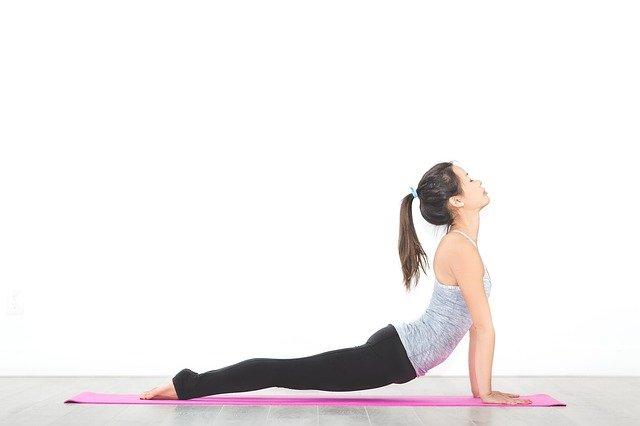
What Do Kegel Exercises Do? Purpose & Benefits
Share
Benefits Of Kegel Exercises
Many people have heard of them, but the big question is - what do Kegel exercises do and how do they help with bladder leaks? Medical professionals tell women and men (yep, men can do them too) to practise them, but what are the benefits of Kegel exercises?
In this post, we’ll take a quick look at what Kegel exercises are and how to do them. We’ll then take a closer look at the main benefits of doing them for both men and women. Do they just stop urinary incontinence, or can you reap other rewards too?
Finally, we’ll see how INNOVO can take the hard work and guesswork out of Kegel exercises and help you gain a strong and healthy pelvic floor and put an end to your bladder leaks.
What are Kegel exercises?
Many people wonder what Kegel exercises are and it’s a common question that we get asked. So put simply, Kegel exercises (also known as pelvic floor exercises) are squeeze-and-release exercises that you do to make your pelvic floor muscles stronger(1).
What do Kegel exercises do?
People do Kegel exercises to strengthen their pelvic floor muscles. They can help make the muscles under the uterus, bladder, and bowel (large intestine) stronger (2). This can then reduce, or stop, incontinence in both men and women.
What are the main benefits of Kegel exercises?
The main benefits of Kegel exercises are they(3):
- Can stop you from having bladder leaks.
- May stop you from accidentally passing poo or wind.
- Can improve orgasms and sexual sensation (now we’ve got your attention).
What do Kegel exercises do for women?
Women sometimes experience bladder leaks during pregnancy or after childbirth, due to the pressure that’s been placed on the pelvic floor muscles. This can lead to stress urinary incontinence, which is when your bladder leaks urine when you laugh, cough, sneeze, or lift a heavy item. So ladies, doing Kegel exercises can strengthen your pelvic floor muscles and can put an end to your bladder leaks (sounds good, doesn’t it?!).
There are other benefits for women, too. For example, practising Kegels(4,6):
- Can stop your bladder, uterus, and bowel from sagging down into the vagina (this is known as a pelvic organ prolapse). If this happens, it can mean that you lose feeling in your vagina and you may leak wee or poo.
- Can improve the blood flow to your vagina and therefore improve your sexual sensation and intensify your orgasms.
- Can relax your vaginal muscles, which can make it more comfortable to have a smear test and/or sex.
- Can increase the vagina’s natural moisture.
What do Kegel exercises do for men?
When we think about exercising our pelvic floor we often think this is only for women. However, men also benefit from Kegel exercises. Working the pelvic floor muscles can be helpful as they (4,5):
- May improve bladder leaks, especially if caused by stress urinary incontinence.
- Help ease prostate pain and swelling that may happen after surgery.
- Can improve the sensation of an orgasm and help to control ejaculation.
- May stop any dribbling of wee after you’ve left the toilet.
How to do Kegel exercises
Let’s get down to business. To do Kegel exercises, tighten the pelvic floor muscles, hold for three seconds, and then release. Repeat the exercises three times a day and aim for three sets of 10 to 15 repetitions a day(7). For more information on how to do Kegel exercises, check out our article on how to do pelvic floor exercises.
Ever fancied yourself as a weightlifter? Did you know women can also do Kegel exercises using Kegel weights, sometimes known as vaginal cones? These are placed inside the vagina while practising Kegel exercises. The cones come in various weights and as someone’s pelvic floor muscles improve, the weight can be increased(8).
Kegel exercises can be done by both men and women on a daily basis. They help to strengthen the pelvic floor muscles which will reduce, or put an end to, bladder leaks. They can also stop you from accidentally passing poo, and improve your sexual experience. But Kegel exercises can be tricky to get right and they’re time-consuming. Let’s be honest, they’re easy to forget and before you know it, you’re getting into bed and you haven’t done a single squeeze all day.
How INNOVO can help you with your Kegel Exercises
We understand how hard Kegel exercises can be and that’s why we’ve invented INNOVO. They take the guesswork out of pelvic floor workouts, giving you all of the benefits of doing Kegel exercises without the effort. You simply wear the shorts, connect the cables, and wear them for 30 minutes a day, 5 days a week - easy peasy. This allows INNOVO to complete 180 pelvic floor exercises for you. In fact, they’re so effective that research shows that 87% of INNOVO users were defined as dry, or almost dry, after 12 weeks(9). Find out how INNOVO can put an end to your bladder leaks and how you can get back to living life on your terms.
Sources
- Healthline. Kegel Exercises. Updated September 2018.
- National Library of Medicine. MedlinePlus. Kegel Exercises. Review January 2019.
- NHS. What Are Pelvic Floor Exercises? Reviewed April 2020.
- Cleveland Clinic. Kegel Exercises: What are they, how to do them, and benefits. Reviewed September 2020.
- Mayo Clinic. Kegel Exercises For Men: Understanding the benefits. September 2020.
- Memorial Sloan Kettering Cancer Centre. Pelvic Floor Muscle (Kegel) Exercises for Women to Improve Sexual Health. Updated December 2018.
- Mayo Clinic. Kegel Exercises: A how-to guide for women. September 2020
- VeryWell Health. How To Use Vaginal Weights For Incontinence. October 2019
- R. Dmochowski – Novel external electrical muscle stimulation device for the treatment of female stress urinary incontinence: randomized controlled noninferiority trial versus intravaginal electrical stimulation. ICS Conference 2018.
